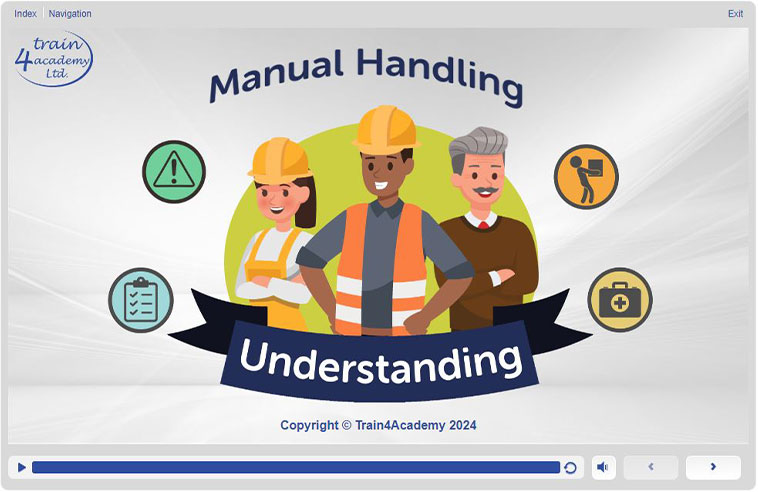Techniques and Tips for Safe Manual Handling
17/09/2019
Manual handling is a common practice within most working environments across many different industries. Even the simplest of manual handling activities can result in serious injury. The HSE states:
"Manual handling causes over a third of all workplace injuries. These include work-related musculoskeletal disorders (MSDs) such as pain and injuries to arms, legs and joints, and repetitive strain injuries of various sorts."
This article looks at how employees and employers can use proactive tips and techniques to ensure that they are practising the safest means when undertaking manual handling tasks to avoid risk.

What is Manual Handling?
Manual handling is the term officially used for movements we do each day in our jobs and in our daily life, that is:
- Lifting
- Lowering
- Pulling
- Pushing
- Carrying
This could be handling:
- Objects
- Boxes
- Sacks
- Bricks
- Animals
- People
Risk assessments should be implemented within the workplace where manual handling activities will be taking place. It is the employer's duty to ensure that the risk assessment highlights all the potential hazards and risks and that the employees are aware of how they can work to minimise the risk to damaging their health when it comes to manual handling.
Pushing or Pulling Loads
Pushing and pulling loads can be a daily activity for many employees, especially those who work in warehouses, building sites and other establishments. If you push or pull loads regularly, here is some useful guidance for you to remember:
- Mechanicals aids should always be well maintained checked regularly and are fit for purpose.
- The HSE States: 'As a rough guide the amount of force that needs to be applied to move a load over a flat, level surface using a well-maintained handling aid is at least 2% of the load weight. For example, if the load weight is 400kg, then the force needed to move the load is 8 kg.'
- Try to always push or pull loads on a smooth and level surface. If this cannot be achieved, then pushing or pulling the load may require a higher force. For example, on a surface this isn't even or level, the force needed to start moving the load could increase to 10% of the load weight. Keep in mind that soft ground may cause more difficulties.
- Be cautious to keep your feet away from the load when pushing or pulling. This will also make it easier to push or pull the load. Take your time and do not go faster than walking speed, as this may increase the chances of suffering an injury.
Manual Handling Techniques for Lifting

- Think and plan the lift
- Keep the heaviest side nearest to your body to help reduce the strain on your back
- Get ready to lift with your feet slightly apart and one leg a little way forward from the other
- Hug the load. This keeps the load far more stable than it would be just balanced in your hands
- Don't bend your back when lifting but do bend your knees. Your leg muscles are far stronger than your back
- Don't suddenly jerk or twist when lifting
- Move steadily; don't rush
- Look ahead of you, not down, and make sure the load does not obstruct your vision
- Lower the load steadily, rest, then slide it into position if you need to
- Always follow your organisation's procedures, risk assessments and training given.
5 General Techniques for Manual Handling to Remember:
- Avoid twisting or leaning
- Hug the load
- Bend using your knees
- Lift no more than 16kg (women) 25kg (men) - this is a guide only and your own capabilities should determine the maximum weight you can handle
- Keep your back straight
5 General Tips for Manual Handling to Remember:
- Make sure that employees have undertaken appropriate manual handling training
- Know your limits when it comes to carrying loads
- Conduct a manual handling risk assessment
- Choose to 'push' the load rather than 'pulling' it
- Plan your route! If you're manual handling a load, plan your route first to avoid any obstacles that may cause injury

The Importance of Correct Manual Handling
Poor manual handling of objects or people can subsequent in life-changing injuries and can cause serious implications for the person who is injured and the employer. Ensuring preventative actions such as practising correct manual handling techniques, will:
- Prevent long-term suffering
- Save days and weeks of work lost
- Build a positive health and safety culture
- Save the company time and money due to investigations and personal injury claims
- Add to peace of mind in the workplace
As well as preventing or controlling MSDs (Musculoskeletal Disorders.)
To ensure employees are adequately trained and to minimise the risk to their health and safety completing manual handling training will help prevent accidents in the workplace.
Understanding Manual Handling
- Work towards compliance with UK Health and Safety legislation
- Unlimited resits at no cost
- Instant certificate
